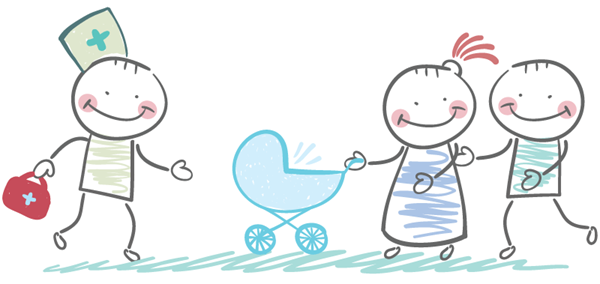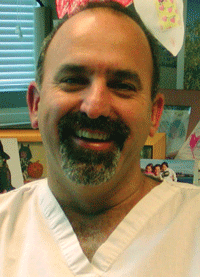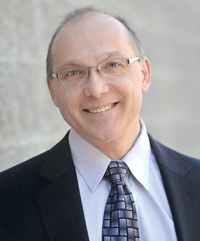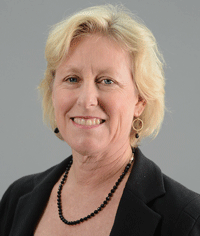Why should an EM resident consider specializing in pediatric EM? What unique opportunities exist for pediatric EM physicians? One of ACEP's Pediatric Emergency Medicine Committee's passions is to develop resources to encourage emergency medicine residents to enter pediatric emergency medicine. EM Resident spoke with some members of the PEM Committee, along with career pediatric EM physicians and researchers Nathan Kuppermann, MD, MPH, FACEP, and Marianne Gausche-Hill, MD, FACEP, FAAP. Collectively, they capture the mind, heart, and spirit of pediatric emergency medicine.
Q. Dr. Kuppermann, why did you specialize in pediatric emergency medicine?
Nathan Kuppermann
Professor of Emergency Medicine and Pediatrics
Department of Emergency Medicine
University of California—Davis
As I arrive in Kathmandu, Nepal, on a post-earthquake medical relief mission, I am reflecting on why I became a PEM physician originally, and how my sense of purpose has evolved over time. In fact it was in Nepal nearly 30 years ago, on a yearlong adventure/medical mission in the middle of my residency, during which I served at a clinic that cares for the poor and indigent in Kathmandu, that I decided to become a PEM physician. During my first visit to Nepal I would start each day with a sense of purpose, aware of acutely ill and injured children needing my attention. Medical care at that time in Nepal was far from the technologically advanced medicine that I practice today. I treated children with bacterial meningitis with oral chloramphenicol, and cared for many children with typhoid, trauma, and other acute, exotic diseases with whatever resources available. If a patient was not responding to treatment for whatever reason, we would simply treat for tuberculosis – and would probably be on target. I was thinking on my feet as a PEM “wanna-be,” and the children were needy and sick. My being there made a difference. There were no PEM physicians in Kathmandu at that time, and I knew I wanted to come back as a PEM physician in the future. The PEM physician has the skillset needed to treat any child in any place at any time. And here I am now, in post-earthquake Nepal, able to offer the skills of a PEM physician, skills that nobody else here has at their disposal.
In the decades since that original Nepal experience, my sense of satisfaction and fulfillment as a PEM physician has only grown. In the nearly 30 years since my first trip to Nepal, I have become a seasoned PEM practitioner, department chair, and researcher. I still have that same sense of purpose of 30 years ago, but now my purpose has shifted to training the next generation of PEM practitioners and conducting research into improving PEM care everywhere. This is the joy of the field of PEM: There are so many ways to contribute, and so much need in all of these areas. In the community, in which the great majority of children with acute illnesses and injuries are cared for, we need PEM specialists. And we need great educators using the latest technology and training methods to train the next generation of PEM practitioners. Finally we need PEM researchers to investigate the best ways to care for acutely ill and injured children, and to determine how to best translate and disseminate those new methods into practice.
So why did I enter the field of PEM? The answer is simple and the choice was easy. I became a PEM physician for three main reasons:
- To care for any ill or injured child anywhere in the world, better than anyone else can;
- To train the next generation of PEM clinicians to do the same;
- And finally, to do the groundbreaking type of research in PEM that is needed to achieve those first and second goals in the best way possible.
It is what still motivates me today, right now, back in post-earthquake Nepal.
Q. Aren't emergency physicians supposed to be able to see “anyone, anything, anytime?” Why should an EM resident do a pediatric EM fellowship?
Emily Rose
Assistant Professor of Clinical Emergency Medicine
Director of Pediatric Emergency Medicine MSIV Selective
Keck School of Medicine of USC. LA County + USC Medical Center
Los Angeles, CA
Most sick kids are seen in the community by non-fellowship trained emergency physicians. There is a tremendous need for emergency physicians who are well-versed in the care of sick kids to be in hospitals throughout the country. There is a need for leadership in administration and education regarding the care of children. It is also great job security to have this niche!
There are pros and cons to each path to pediatric emergency medicine. Medical students often want to know which route to take if they know they want to end up in peds EM. Here I give a disclaimer: I am biased. I always recommend starting with EM and then doing a peds fellowship for very practical reasons. First, you can see anyone and work anywhere, which really opens up your options. Secondly, emergentologists perform a lot more procedures and resuscitations in residency than occurs in even the busiest/highest acuity PEM fellowship. You will be more comfortable with procedures and resuscitation if you train in EM. The downside is you have to work harder to learn pediatric things like developmental stages, feeding regimens, pediatric rashes, vaccination schedules, parenting advice, things that are important for care and parental education but less urgent. The dirty secret is that nobody is ever 100% comfortable when caring for a critically ill child because it is less common and there is so much at stake.
Christopher Amato
Director, PEM Fellowship
Medical Director, Pediatric Advanced Life Support
Memorial Hospital/Goryeb Children's Hospital
Morristown, NJ
Though an emergentologist can care for anyone at any time, it does not mean s/he is absolutely comfortable with doing so. This is what the extra training of a PEM fellowship can provide. It allows for further maturation of your already appreciable skills and adds a new tool kit to them. It will provide a foundation of comfort through direct exposure to a unique population that is unlike any other type of patient encounter. As an EM trained physician, you are already an exceptional diagnostician, skilled in a vast array of procedures – but this is because you have honed these with repetition and mentoring from other skilled physicians. The same should be realized for caring for the pediatric patient: It is a skill that needs to be honed by practice and mentoring. A brief period of training, as compared to a career, will be all that is required to not only add to your already formative arsenal but also make you an invaluable member to any institution fortunate to have you.
Q: Is there a difference between pediatric EM fellowships for pediatricians and emergentologists?
Dr. Amato: The difference is the rotations that you would take and it only requires 2-3 years for EM as opposed to the 3 years for pediatric trained. The focus of the fellowship is to get comfortable with pediatric patients of all ages and to add to your abundant knowledge base. There is basic science education as well as research opportunities to add to the clinical knowledge too.
Q. Are there unique opportunities for leadership, teaching, and career development within pediatric emergency medicine?
Dr. Rose: There are endless opportunities for leadership in the PEM world. The EM world needs PEM experience in administration in child-centered protocols, hospital readiness, and quality of care. There is need for pediatric EM education in the EM world to improve the care of children from good to excellent. Additionally, having a career that is meaningful and accomplishing larger goals or a higher purpose is extremely important for job satisfaction and overall wellness.
Dr. Amato: There is a growing need for pediatric specialists, as anyone can attest if listening to the local hospitals tout “pediatric specialists are available.” What could be more fitting than an emergency physician with innate knowledge and training in pediatric emergency medicine?
Q. What's the best part of your job?
Dr. Rose: Where do I start? I am lucky enough to have the best job in the world. I am challenged, educated, and deeply rewarded each shift. Every day is different; every day I learn something and have the opportunity to get better at what I do. The human body is amazingly complex and resilient, with layers of pathophysiology to better understand. Becoming a better physician is more than expanding your knowledge base, billing well, or seeing x number of patients per hour. We can all improve in so many areas. We can explain something better to a patient or parent, improve our bedside manner, give feedback a little bit better, resolve conflict more effectively, or gain new perspectives on life from those with another language, culture, socioeconomic status, or world view.
I have the pleasure of working with amazing residents and fantastic colleagues and LOVE going to work. I work about half of my shifts in the adult areas of the ED and half in the peds ED. I have so much fun in the peds ED with the cute and entertaining kids who are less often critically ill (but who can tank quickly when they are sick). Working with sick adults helps me stay comfortable with a crashing patient and the associated procedures that are less commonly required in kids. The variety of seeing both kids and adults is refreshing and helps me be better at both (I hope).
Dr. Amato: No one is ever so tall as when they stoop to pick up a child. Though I often consider my success with children due to the facts that I am their height and mentality level, there is nothing better than the belly-laugh of a 2-year-old who had fever and now is improving.
Q. Dr. Gausche-Hill, why did you specialize in pediatric emergency medicine?
Marianne Gausche-Hill
Vice Chair and Chief of the Division of Pediatric Emergency Medicine/Director of Pediatric Emergency Medicine and EMS Fellowships
Harbor-UCLA Medical Center
I went into pediatric emergency medicine because of a desire to learn as much as I can so that I could care for our most vulnerable patients. I enjoyed the thought of sub-specialization in an area of medicine that few had tackled so that I could assist our specialty in improving the lives of children and their families in emergency settings. The joy of taking care of pain, curing illness, and repairing injury in children is truly life-changing, both for the physician and her patients. Finally, advocating for those patients who do not have a political voice is rewarding and is necessary for improving access to emergency care and to improving the quality of care provided.







